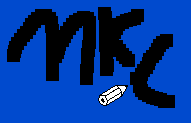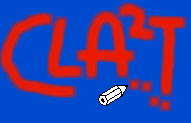



|

|

|
|
EDXML doc
DESCRIPTION edxml is a small editor providing routines for text manipulation, such as search and replacement tools and XML tags edition. Part of an E.N.S. Lyon project, edxml is intended to perform specific tasks upon linguistic corpora, consisting in the exploration of the formal proximity between enouncements, assisted tag placement, extraction, deletion and export of markup strings. The user can propose definitions for textual phenomena via the Perl regular expressions and then isolate and mark them with standard XML flags. Features of edxml include special characters matching. The module looks at the current cursor position and then tries to find the character pair that brackets the cursor. Characters that are searched for are: <> () {} [] "". It also checks the position of these pairs and try to highlight bad positions. If the character couples are not on the same line or not in the same column, then there might be a missing parenthesis somewhere. Characters that appear to not align are highlighted in red. edxml is free software. Please see the license terms for information on its use and redistribution, and for a DISCLAIMER OF ALL WARRANTIES. MODULES AND USE edxml has the structure of a traditional text editor: a main window, a buffer for edits, menus and buttons. The tasks to perform upon the loaded file are activated through the menus or the buttons which are shortcuts for some of the routines already listed in the menus. The File menu New : loads a new file. This file may be registered with the Save, Save As commands. Open : calls a dialog box for the selection of an existing file. Include : inserts the contents of an external file at the cursor point, without deleting the "undo" information of the current file. Save : saves edits by calling a dialog box if the document was not registered. Save As : saves the loaded file by calling a dialog box providing the possibility of changing the file name. Export : exports the clipboard selection to a file, selected with a dialog box. Before using this option, you have to copy the primary selection of the buffer to the clipboard. You may export several selections to a file ( the ancient exports will not be deleted ). Exit : closes the application. The Edit menu Undo : undoes the last action. Redo : re-makes edits step by step. Cut : deletes the primary selection of the buffer and pushes its contents in the clipboard. Copy : copies the primary selection of the buffer to the clipboard. Paste : inserts the clipboard selection into the buffer, at the cursor point. Clear : deletes the primary selection of the buffer. Select All : marks all the lines of the buffer as a primary selection. Unselect All : clears all the selected regions of the buffer. The Search menu Find : searches for a given string in the buffer. Arguments such as "direction", "case" and "mode" may be controlled. The '-regexp' mode is the most important argument for this program. It offers all the power of the Perl regular expressions, including the backup references. The search may be global. Find Next : searches '-forward' for the selected string in the application and stops after the first occurrence of the motif found. Find Previous : searches '-backward' for the selected string in the application and stops after the first occurrence of the motif found. Replace : searches for a given string in the buffer and replace its instances with another string. The search has the same controllable arguments as described for the Find option and may be global. The Markup menu This menu refers to the manipulation of the standard XML tags. The formal representation for these tags is "<[^>]+>". There are two edit modes for the XML documents: an assisted mode, through the interface provided by this menu, and a manual mode. During the non-assisted manipulation of the buffer, the syntax corrector and other facilities will be desactivated. If you want to return to the assisted mode while working in safe mode, you should just press the <F5> key which will reset the XML indicators and indent the selected line. Display Tag Area : searches for text areas marked with the given tag in the buffer. The search may be global. Delete Tag Area : searches for text areas marked with the given tag in the buffer and deletes them. The deletion may be global for one tag. Remove Markups : removes all the tags from the buffer. XML Declaration : checks the edits for XML syntax and inserts an XML declaration at the cursor point. Document Type : checks the edits for XML syntax and inserts a Document type declaration at the cursor point. Insert Comment : inserts an XML comment at the cursor point. Write Tag : pops up a tag write dialog, then inserts the collected informations, if checked OK, as a start tag, an empty tag or an end tag, at the cursor position . Insert Text : inserts a text string at the cursor point. Markup Selections : takes a motif and search for its instances in the buffer. There are three controllable arguments : "direction", "mode" and "case". Then, if a tag name is provided, the routine will mark the selections with the given tag. This menu entry can be used only if the "Unsafe Mode" is checked in the options. The Tools menu Show Index : pops up a top level with a list widget and a menu. The menu provides entries commanding the extraction of all the lexical forms from the loaded file or the listing of the tag names, attributes, values and comments from an XML document. Proximity : pops up a control top level for routines that calculate the formal distances between enouncements. The delimiters are ".!?". A score is made with the common atoms ( forms, bigrams ) of two enouncements and and the specific atoms of each enouncement. You can structure the corpus by placing in the buffer a special tag "key", of the type <key string="value"> and then specify "string" as an argument, in order to avoid too many iterations. XML Parser : pops up a top level with a read-only text widget which can display parsed contents. It provides a menu with entries controlling the text wrap and the closure of the XML objects according to the requested depth. The View menu Goto Line : moves the cursor to the line number. Wrap : controls the line wrap. Preferences : shows the controls for the edit modes and the general configuration of the application. The Help menu Help : pops up a help window which can display these contents. License : pops up a read-only text widget displaying the license of edxml. About edxml : pops up the front page of edxml.
This program is free software; you can redistribute it and/or modify it under the terms of the GNU General Public License as published by the Free Software Foundation; edxml is distributed in the hope that it will be useful, but WITHOUT ANY WARRANTY; without even the implied warranty of MERCHANTABILITY or FITNESS FOR A PARTICULAR PURPOSE. See the GNU General Public License for more details. If you have not a copy of the GNU General Public License, please write to the Free Software Foundation, Inc., 675 Mass Ave, Cambridge, MA 02139, USA. The Berkeley DB module is free of charge under the condition that the complete source code for the application must be available and freely redistributable. The Perl2exe compiler may be used at no charge during an evaluation period of 30 days. |